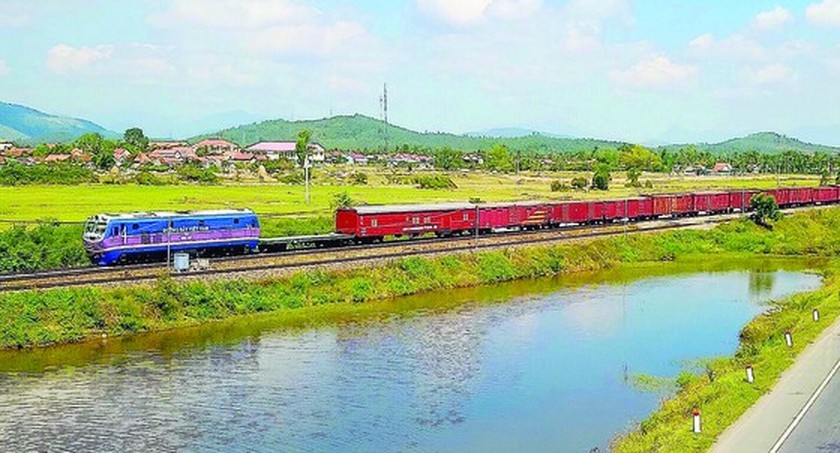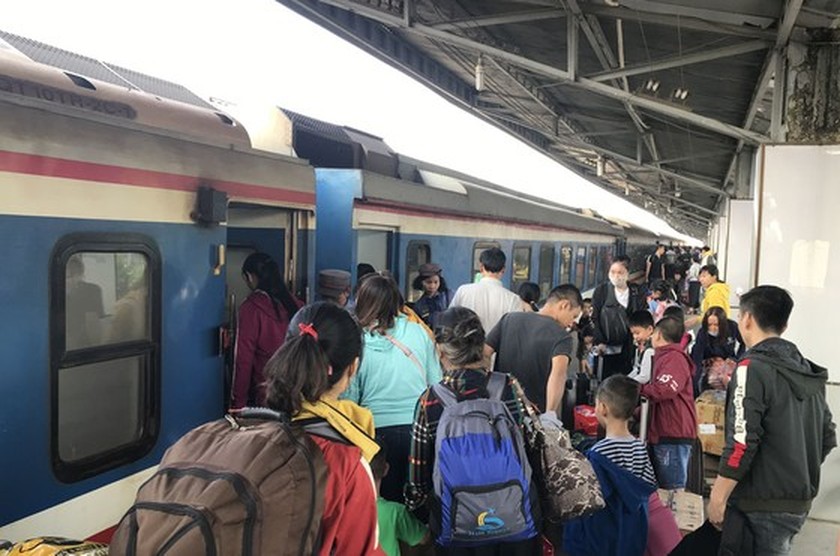Minister of Transport Nguyen Van Thang proposed that World Bank (WB) help Vietnam find suitable partners for the country’s North-South high-speed rail project. This proposal was made in a working session with WB’s National Director in Vietnam at the beginning of this December.

The railway possesses great advantages in transporting passengers and cargoes. (Photo: SGGP)
The Ministry of Planning and Investment has just reached an agreement with the Transport Ministry on the investment scenario for the North-South high-speed rail with the designed velocity of 180-250km/hour instead of the old one of 350km/hour. This is a milestone of the project after 15 years solving the problem of effectiveness for such huge investments. At present, the Transport Ministry and the State Appraisal Council are preparing a report to submit to the Prime Minister for an investment approval.
In 2009, the North-South high-speed rail was first included in the Overall Planning of the National Railway until 2020, with a Vision to 2030. It was considered a breakthrough in traffic infrastructure, and was expected to change the transport market share structure by transforming the railway sector into the major one in accordance with Article 5 of the Railway Law.
The Ministry of Transport then introduced a construction plan for this critical railway so that by 2020, the sections of Hanoi – Vinh and Ho Chi Minh City – Nha Trang would have been completed. In 2035, the route of Hanoi – HCMC would come into effect, and the other sections would be finished a few years later. However, the huge capital needed for this project made the National Assembly reject the project.
In 2015, the Transport Ministry reactivated the project, and four years later, 3 investment scenarios were introduced. Among them, the third was the Transport Ministry’s favorite, with the rails that could accommodate a designed velocity of 350km/hour and an exploitation velocity of 320km/hour. These rails are for passenger transport only, while the current ones will be used for freight transport and local resident needs. It was disproved by the joint consultation and assessment team (invited by the State Appraisal Council).
Accordingly, building the rails for the velocity of 350km/hour leads to higher investments but is not able to address the urgent demand of logistics cost reduction for higher competitiveness of Vietnam.
The latest scenario is to construct 1,435-milimeter-wide dual rails for both passenger and cargo transport with designed and exploitation velocities of 250km/hour and 180-225km/hour, respectively. The total length of the route from Ngoc Hoi Station in Hanoi to Thu Thiem Station in HCMC is 1,508km, to be invested in separated stages. There will be 50 stations on the route, with a total estimated investment of VND1,421 trillion (US$61.67 billion).

Passengers at Saigon Train Station. (Photo: SGGP)
As Vietnam stretches vertically, the North-South railway is considered the backbone of the transportation system, which means an investment in railway infrastructure at this moment is critical for development. Therefore, the newest scenario has received praises from many experts in the field.
Dr. Nguyen Xuan Thuy, former Director of Transportation Publisher, commented that it is reasonable for Vietnam to build such a railway system to serve both passengers and freight. Experience from other nations shows that it would be rather expensive and ineffective to aim at a railway with a velocity of 350km/hour yet unable to fully exploit.
Dang Huy Dong, former Deputy Minister of Planning and Investment, stated that a railway used for both passengers and cargoes is more suitable for the national economic conditions. What is worth considering now is the clearance tasks for the land around to-be stations and the bidding process to earn money as investments for railway construction. This will avoid the situation of borrowing money and thus having to use the contractors assigned by loaners. In addition, to be active in capital sources, it is necessary to wisely regulate the money gained from land bidding along the route via amending related laws.
Many opinions have been raised on the fact that such a long investment time of around 16 years may lead to outdated technologies chosen for this high-speed railway. Other experts worry about the effectiveness of this project, being ‘a pillar in the infrastructure to shape the national development’.
Prof. Dr. La Ngoc Khue, former Deputy Minister of Transport, shared that a North-South railway transporting both passengers and freight at a velocity of around 200km/hour is much more effective than the combination of five 4-lane expressways. However, to exploit it to the fullest, it is essential to form an international railway that links all major trading centers of the country from the southern Ca Mau Province, Can Tho City to the northern Hanoi, Lang Son Province, Lao Cai Province, and then to the neighboring nations such as China or even to European ones.
At present, the Transport Ministry and related state units are still analyzing the feasibility of the North-South high-speech rail project, along with the investment stage separation, and the total investment amount in order to ensure investment effectiveness.
The latest proposal by the joint consultation and assessment team states that the project is divided into three stages, lasting 16 years. The first stage (2025-2031) is the time to construction the Thu Thiem (HCMC) – Nha Trang section with a total investment volume of $16.58 billion. The second one (2031-2038) is for the building of the 677-kilometer-long Hanoi – Da Nang section, costing $26.44 billion. The last stage from 2038-2041 is the time for the 469-kilometer-long Da Nang – Nha Trang section, with an investment of $18.65 billion.
By Minh Duy – Translated by Thanh Tam